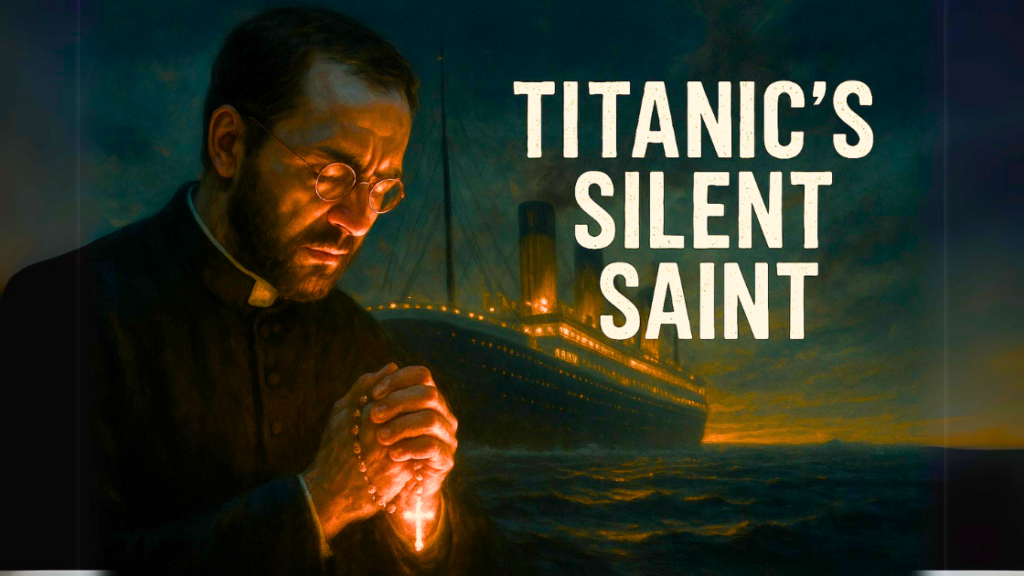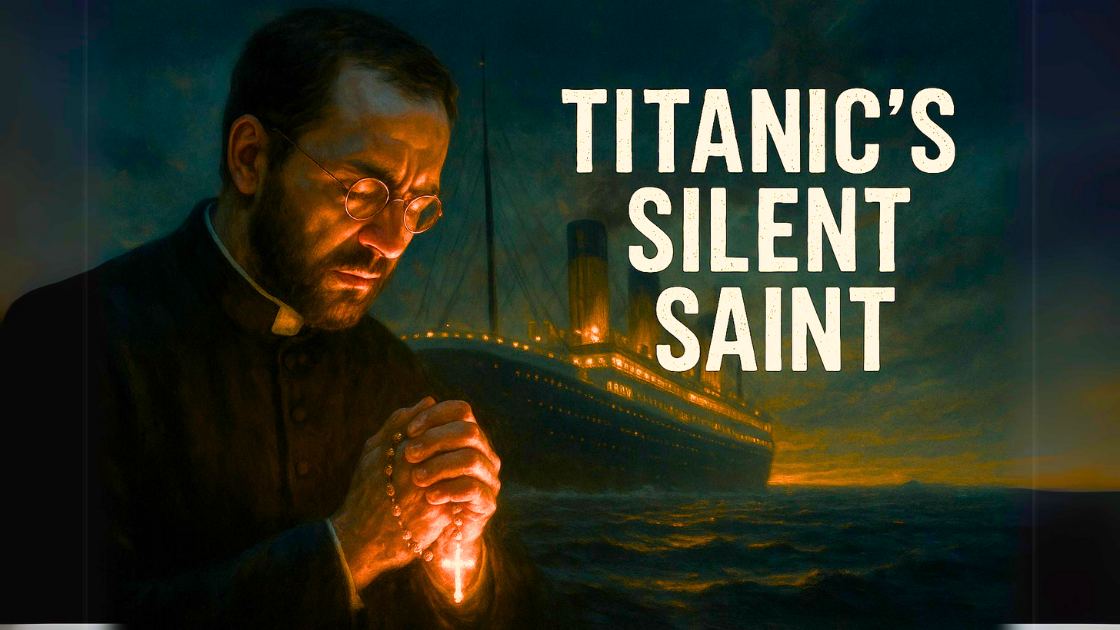
Introduction
In popular imagination, the Titanic disaster is remembered for its luxury, tragedy, and stories of heroism. But among the many accounts, one remains almost hidden between the lines of history: that of a Catholic priest who, instead of seeking safety, chose to stay onboard to console the desperate with prayers and the sacraments. This is the legacy of Father Thomas Byles—whose life and death are a profound testimony of faith, courage, and Christian charity.
From Protestant England to the Catholic Priesthood
Thomas Roussel Davids Byles was born in 1870 in Leeds, England, into a Protestant family of Congregationalist tradition. A brilliant student at the University of Oxford, he initially intended to become an Anglican minister. However, his intellectual and spiritual journey led him to convert to Catholicism in 1894, inspired by his younger brother’s example and the writings of St. Thomas Aquinas—from whom he took his name at his Catholic baptism.
After his conversion, he entered the Pontifical Beda College in Rome, where he was ordained a priest in 1902. Returning to England, he served as a parish priest in Chipping Ongar, a small town in Essex. He was a zealous pastor, known for his humility, intelligence, and dedication to the faithful—especially the poor. His discreet lifestyle hid a soul deeply committed to service and the Church’s mission.
A Journey with Purpose
In 1912, Father Byles was invited to celebrate the wedding of his brother William, who lived in the United States. A last-minute change of ticket placed him on the Titanic. He boarded carrying a portable altar, liturgical vestments, and a rosary. His plan was simple: cross the Atlantic, celebrate the marriage, and return to his parish. What he didn’t know was that this journey would become the stage for his greatest witness of faith.
During the first days aboard, he celebrated Masses for second- and third-class passengers—many of them Catholic immigrants. He preached with clarity and zeal, using imagery that brought the sacred closer to everyday life. In one homily, he compared the sacraments to spiritual lifeboats, emphasizing that preparing the soul was more important than any material safety. His words, once symbolic, would soon become prophetic.
The Choice to Stay
On the night of April 14, 1912, the Titanic struck an iceberg. As chaos spread through the ship, Father Byles did not hesitate. He went to the third-class areas, helped open gates to the upper decks, organized groups for evacuation, and led people to the lifeboats.
Several survivors testified that he remained calm the entire time, comforting passengers and leading prayers in several languages. Many knelt around him, praying the Rosary as the ship sank. Even after being offered a seat on a lifeboat—twice—he refused, saying his duty was to stay with the others.
At 2:20 a.m., with the Titanic moments from disappearing beneath the ocean, Father Byles stood on deck, surrounded by the faithful. He prayed, gave general absolution, and prepared souls for their encounter with God. He was last seen standing before the icy sea, holding his rosary.
The Church’s Recognition
Father Byles’ courage did not go unnoticed. When news of his actions reached Rome, Pope Pius X called him a “martyr of charity”—a title reserved for those who die out of supernatural love for their neighbor. Since then, he has been remembered by Catholics around the world as a shining example of total devotion to the priestly calling.
In 2015, the Diocese of Brentwood in England officially opened his cause for beatification. The title of “Servant of God” was the first step toward recognizing his sanctity. Testimonies from eyewitnesses, parish records, and personal items—including his saltwater-stained breviary—were included in the canonical process.
His story also began inspiring the faithful, and many graces have been attributed to his intercession. It’s not uncommon to see people praying before the stained-glass window dedicated to him in Ongar, asking for protection, conversion, and miracles in their lives.
A Message for Our Time
In a world that often exalts individualism and self-preservation, Father Byles’ choice sounds like a radical challenge: to love until the end, even when that love demands sacrifice. His decision to remain on the ship—praying with the doomed and offering their souls to God—is a living response to Christ’s call: “Greater love has no one than this, that he lay down his life for his friends” (John 15:13).
His story invites us to reflect on our own choices—how we live our faith, and how far we are willing to go for the sake of others. The heroism of Father Byles lies not only in what he did but in the deep conviction that guided him: the certainty that no soul should go down without hope.
Connect with Us!
Explore more Catholic content and support our mission:

